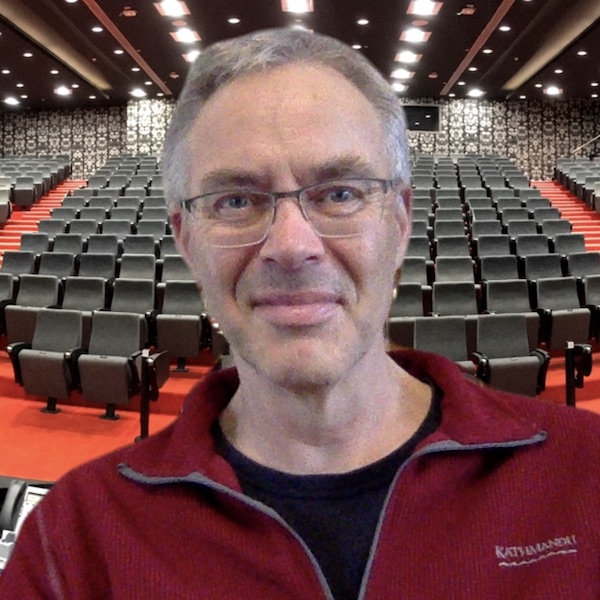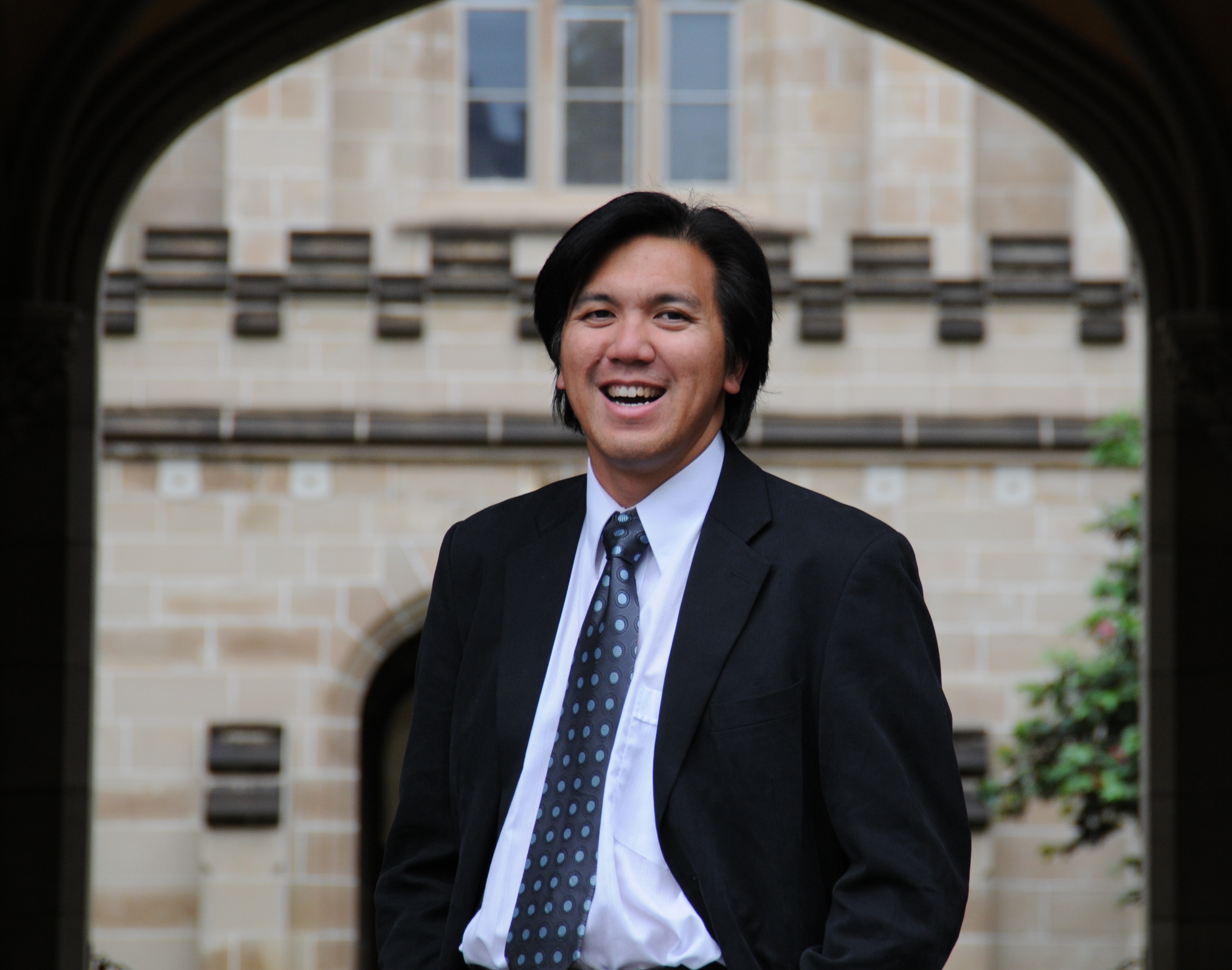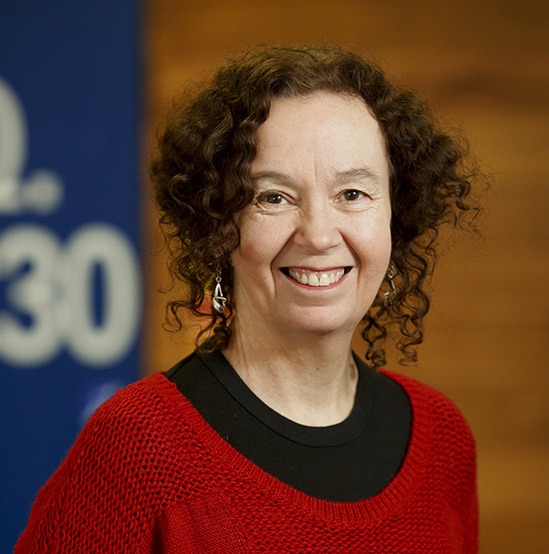Melbourne Peer Review of Teaching Program
Overview
Peer review of teaching is a widely adopted methodology for evaluating and improving teaching and learning at universities worldwide. It can take many forms but generally involves teaching academics engaging in supportive conversations about one or more aspects of teaching and student learning.
The Melbourne Peer Review of Teaching (PRT) program is an ongoing program. Submit an Expression of Interest at any time.
PRT aims to improve the quality of teaching, learning and the educational experience of students at the University of Melbourne with a two-tiered approach to peer review of teaching.
Tiers of Peer Review of Teaching
Faculty/School Peer Review of Teaching
Most PRT activities at the University takes place in faculties and schools, providing opportunities for academic staff to give and receive collegial feedback on teaching, and to engage in ongoing discussions about teaching and learning. PRT activities at faculty/school level can address the priorities and needs of students in specific disciplinary contexts.
Melbourne Peer Review of Teaching
Melbourne PRT is a university-wide program providing academic staff with opportunities for formal evaluation and recognition of teaching performance aligned with the University’s Academic Performance Framework by members of the Melbourne College of Reviewers.
Why engage in Peer Review of Teaching?
Tier 1: Faculty/School Peer Review of Teaching
Faculties and graduate schools are best placed to facilitate PRT programs that address build communities of practice addressing local priorities, student needs and fostering collegial discussions about teaching and learning. Below are some templates, guides and examples of faculty/school-based PRT programs.
Templates
Guides
Giving useful feedback
Getting the most out of Peer Review of Teaching
Additional Peer Review guides.
PRT Templates from MDHS
Other reading
Tier 2: Melbourne Peer Review of Teaching
Melbourne PRT provides opportunities for formal assessment and recognition of teaching performance involving a holistic review of curriculum design; assessment practices and teaching practices.
The Melbourne PRT program is voluntary. Teaching academics may apply to have their teaching reviewed. The reviews are undertaken by members of the Melbourne College of Reviewers, highly experienced academics with a demonstrated track record in teaching excellence.
Stages of the review
The review is in three stages:
-
Stage 1: Submission of Teaching portfolio
The portfolio is a selection of materials that demonstrates aspects of teaching practice and experience: a ‘showcase’ of approaches to teaching providing examples of facilitated student learning. Preparing a teaching portfolio can be a useful first step in building a case for teaching excellence as it requires reflection on one’s teaching experience, approaches to teaching and learning, and understanding of good university teaching.
See Preparing a Teaching Portfolio for the Melbourne PRT Program
Sample teaching portfolios
-
Stage 2: Example of curriculum design/subject outline
A subject outline (sometimes referred to as ‘subject or unit guide’), is the information students receive about the aims and requirements of the subject: presented to students either on the subject’s LMS site, or as a handout, or powerpoint slides at the first lecture/class.
Typically, a subject outline will include:
- A brief overview or description of the subject aims
- A list of learning objectives or intended learning outcomes
- Information about the assessment tasks including a description of task requirements, due dates for tasks and information about how they will be assessed (i.e. assessment criteria)
- Other Information about the requirements of the subject and/or resources available to students
The subject outline enables the expert reviewers to see elements of your curriculum design and provides a context for the session they will observe i.e. how does the class fit in the context of the subject/unit.
The subject outline is to be submitted at least three weeks before the scheduled class observation.
NB: If as reviewee you did not have a role in designing the subject of the scheduled class observation, please state this and if possible, submit an example of curriculum that you have designed in another subject or unit.
-
Stage 3: Observation of teaching
An important part of the Melbourne PRT is observation of your classroom teaching (or online equivalent) by one of the Melbourne College of Reviewers. The purpose is to review how well you deliver a class and engage students.
When the class observation is being organised, you will be asked to indicate the class you’d like observed. The observation will last for up to one hour (maximum), so if you are teaching a 3-hour class, please choose which hour you would like observed. If you are unsure, we advise that you choose the first hour as it will include your introduction of the topic and session. Having a reviewer in your class from the start is also likely to be the less disruptive than having them join in middle of the session.
After the observation, you can expect a written a report from your reviewer within 2-3 weeks. This report will be a holistic review of your teaching based on the teaching portfolio, subject outline and class observation. After receiving the reviewer’s report, you will have the opportunity to submit a short response.
Melbourne College of Reviewers
The Melbourne College of Reviewers are experts, appointed for their sustained personal record of demonstrated teaching excellence, innovation and/or leadership. The role of the reviewer is to evaluate an academic’s teaching practice by reviewing their curriculum design (including assessment) and classroom performance (or online equivalent). Based on this review, reviewers will prepare a short written report that can be used by individuals as evidence of teaching quality.
Meet our Reviewers
 Associate Professor Russell Cross , Melbourne Graduate School of Education
Associate Professor Russell Cross , Melbourne Graduate School of Education Professor Véronique Duché, Director of Bachelor of Arts, A.R. Chisholm Professor of French, School of Languages and Linguistics, Faculty of Arts
Professor Véronique Duché, Director of Bachelor of Arts, A.R. Chisholm Professor of French, School of Languages and Linguistics, Faculty of Arts Professor Marilys Guillemin, Associate Dean Learning and Teaching, Faculty of Medicine, Dentistry and Health Sciences
Professor Marilys Guillemin, Associate Dean Learning and Teaching, Faculty of Medicine, Dentistry and Health Sciences
Professor, Centre for Health Equity, Melbourne School of Population and Global Health Associate Professor Piers Howe, Director of Teaching and Learning, Melbourne School of Psychological Sciences, Faculty of Medicine, Dentistry and Health Sciences
Associate Professor Piers Howe, Director of Teaching and Learning, Melbourne School of Psychological Sciences, Faculty of Medicine, Dentistry and Health Sciences Professor Jason Ivanusic Department of Anatomy and Neuroscience, School of Biomedical Sciences, Faculty of Medicine, Dentistry and Health Sciences
Professor Jason Ivanusic Department of Anatomy and Neuroscience, School of Biomedical Sciences, Faculty of Medicine, Dentistry and Health Sciences Associate Professor Andrew Jamieson, Associate Professor in Near Eastern Archaeology, School of Historical and Philosophical Studies, Faculty of Arts
Associate Professor Andrew Jamieson, Associate Professor in Near Eastern Archaeology, School of Historical and Philosophical Studies, Faculty of Arts Associate Professor Aaron Jarden, Coordinator, Master of Applied Positive Psychology, Center for Wellbeing Science, Melbourne Graduate School of Education
Associate Professor Aaron Jarden, Coordinator, Master of Applied Positive Psychology, Center for Wellbeing Science, Melbourne Graduate School of Education Associate Professor Sunita Jogarajan, Melbourne Law School
Associate Professor Sunita Jogarajan, Melbourne Law School Associate Professor Louise Keogh, Centre for Health Equity, Melbourne School of Population and Global Health
Associate Professor Louise Keogh, Centre for Health Equity, Melbourne School of Population and Global Health Associate Professor Deborah King, Director, Bachelor of Science, School of Mathematics and Statistics, Faculty of Science
Associate Professor Deborah King, Director, Bachelor of Science, School of Mathematics and Statistics, Faculty of Science Associate Professor Brian Krongold, Department of Electrical and Electronic Engineering, Melbourne School of Engineering
Associate Professor Brian Krongold, Department of Electrical and Electronic Engineering, Melbourne School of Engineering- Professor Margreta Kuijper, Department of Electrical and Electronic Engineering, Melbourne School of Engineering
 Associate Professor Tim Lynch, Associate Professor in American Politics, School of Social and Political Sciences, Faculty of Arts
Associate Professor Tim Lynch, Associate Professor in American Politics, School of Social and Political Sciences, Faculty of Arts Associate Professor Rosemary McKenzie, Director of Teaching and Learning, Melbourne School of Population and Global Health, Faculty of Medicine, Dentistry and Health Sciences
Associate Professor Rosemary McKenzie, Director of Teaching and Learning, Melbourne School of Population and Global Health, Faculty of Medicine, Dentistry and Health Sciences Professor Emeritus Ian Malkin, Director, Juris Doctor, the Ian Malkin Centre for Legal Academic Skills, Melbourne Law School
Professor Emeritus Ian Malkin, Director, Juris Doctor, the Ian Malkin Centre for Legal Academic Skills, Melbourne Law School Ms Judith Marychurch , Assistant Dean, Teaching and Learning, Melbourne Law School
Ms Judith Marychurch , Assistant Dean, Teaching and Learning, Melbourne Law School Professor Alistair Moffat, School of Computing and Information Systems, Melbourne School of Engineering
Professor Alistair Moffat, School of Computing and Information Systems, Melbourne School of Engineering Professor Andrew Ooi, Department of Mechanical Engineering, Melbourne School of Engineering
Professor Andrew Ooi, Department of Mechanical Engineering, Melbourne School of Engineering Professor Tim Parkin, Tatoulis Chair in Classics, School of Historical and Philosophical Studies, Faculty of Arts
Professor Tim Parkin, Tatoulis Chair in Classics, School of Historical and Philosophical Studies, Faculty of Arts Associate Professor Sean Pinder, Deputy Head (Teaching), Department of Finance, Faculty of Business and Economics
Associate Professor Sean Pinder, Deputy Head (Teaching), Department of Finance, Faculty of Business and Economics Professor Melanie Plesch, Associate Dean (Academic), Faculty of Fine Arts and Music
Professor Melanie Plesch, Associate Dean (Academic), Faculty of Fine Arts and Music Professor Harry Quiney, Deputy Director, Bachelor of Science; Deputy Head, School of Physics, Faculty of Science
Professor Harry Quiney, Deputy Director, Bachelor of Science; Deputy Head, School of Physics, Faculty of Science Associate Professor Suzanne Rice, Deputy Director, Assessment Research Centre, Melbourne Graduate School of Education
Associate Professor Suzanne Rice, Deputy Director, Assessment Research Centre, Melbourne Graduate School of Education Professor Carsten Roever, School of Languages and Linguistics, Faculty of Arts
Professor Carsten Roever, School of Languages and Linguistics, Faculty of Arts Professor John Tobin, Francine V McNiff Chair in International Human Rights Law, Melbourne Law School
Professor John Tobin, Francine V McNiff Chair in International Human Rights Law, Melbourne Law School Associate Professor Kate Tregloan, Associate Professor Teaching and Learning; Associate Dean (Teaching and Learning), Faculty of Architecture, Building and Planning
Associate Professor Kate Tregloan, Associate Professor Teaching and Learning; Associate Dean (Teaching and Learning), Faculty of Architecture, Building and Planning Professor Steve Trumble, Head, Department of Medical Education, Melbourne Medical School, Faculty of Medicine, Dentistry and Health Sciences
Professor Steve Trumble, Head, Department of Medical Education, Melbourne Medical School, Faculty of Medicine, Dentistry and Health Sciences Associate Professor Frederik Vervaet, School of Historical and Philosophical Studies, Faculty of Arts
Associate Professor Frederik Vervaet, School of Historical and Philosophical Studies, Faculty of Arts Associate Professor Karena Waller, Department of Microbiology and Immunology, Faculty of Medicine, Dentistry and Health Sciences and Melbourne Centre for the Study of Higher Education, Melbourne Graduate School of Education
Associate Professor Karena Waller, Department of Microbiology and Immunology, Faculty of Medicine, Dentistry and Health Sciences and Melbourne Centre for the Study of Higher Education, Melbourne Graduate School of Education Associate Professor Odilia Wijburg, Department of Microbiology and Immunology, School of Biomedical Sciences, Faculty of Medicine, Dentistry and Health Sciences
Associate Professor Odilia Wijburg, Department of Microbiology and Immunology, School of Biomedical Sciences, Faculty of Medicine, Dentistry and Health Sciences Professor Uta Wille , School of Chemistry, Faculty of Science
Professor Uta Wille , School of Chemistry, Faculty of Science
How to apply
Please submit an expression of interest at any time.
Submit Expression of Interest Form
Enquiries
For more information about the Melbourne PRT program, please contact:
Professor Chi Baik
Frequently asked questions
-
Who can have their teaching reviewed?
Melbourne PRT program is voluntary and open to all teaching academic staff.
-
What kind of class can I select for the observation?
Any type of teaching context (e.g. online, large class, clinical) can be selected for the peer observation. Reviewers will observe up to 1 hour maximum. If you are teaching a 3-hour class, nominate which hour you would like observed. If you are unsure, we advise that you choose the first hour as it will include your introduction of the topic and session
In addition to the teaching observation, your teaching portfolio and subject outline will be considered in the review process.
-
Who will be my reviewer?
You will be assigned a reviewer from the Melbourne College of Reviewers. The expert reviewers appointment is based on their sustained record of demonstrated teaching excellence, innovation and/or leadership. To avoid potential conflicts of interest, you will not be allocated reviewers from your immediate department or unit. However, where possible, the assigned reviewer will be from the same broad field of study.
-
What is the difference between Tier 1 and Tier 2 peer review?
Tier 1 refers to Faculty/School-based peer review programs for ongoing collaborative professional development and teaching improvement. Tier 2 is a University-wide Melbourne PRT program for performance appraisal and formal recognition of teaching per the University’s Academic Performance Framework and the ACBI guidelines for Performance Development Review (PDR).
-
What does the acceptance to the Melbourne PRT program entail?
Following a successful application, you will be notified regarding your reviewer and review date. You will submit a teaching portfolio and subject outline 3 weeks before the review date. Within 2 weeks of the observation (review date) you will receive your reviewer’s report. You will have the opportunity to prepare a short response to the report.
-
What criteria will reviewers use to evaluate the quality of my teaching?
Your teaching will be reviewed holistically based on your teaching portfolio, example of curriculum design (subject outline) and observation of teaching. Reviewers will use broad criteria for what constitutes ‘good university teaching’ based on research evidence. The primary focus will be on what you do (and how well) to engage students and facilitate their learning. In making an overall assessment of teaching practice, the reviewers may also refer to the University’s Academic Performance Framework which outlines expectations at each academic level.
-
What happens to the reviewer’s report?
Approximately two weeks after the observation, the Melbourne CSHE will send you the reviewer’s report.
Where participation in the Melbourne PRT program has been mandated by a faculty/school, the Melbourne CSHE, with your prior knowledge and consent, may send the reviewer’s report directly to academic supervisors or HR staff within that faculty/school.
-
How long is a review ‘valid’ for?
Review reports will be ‘valid’ for a three-year period.
